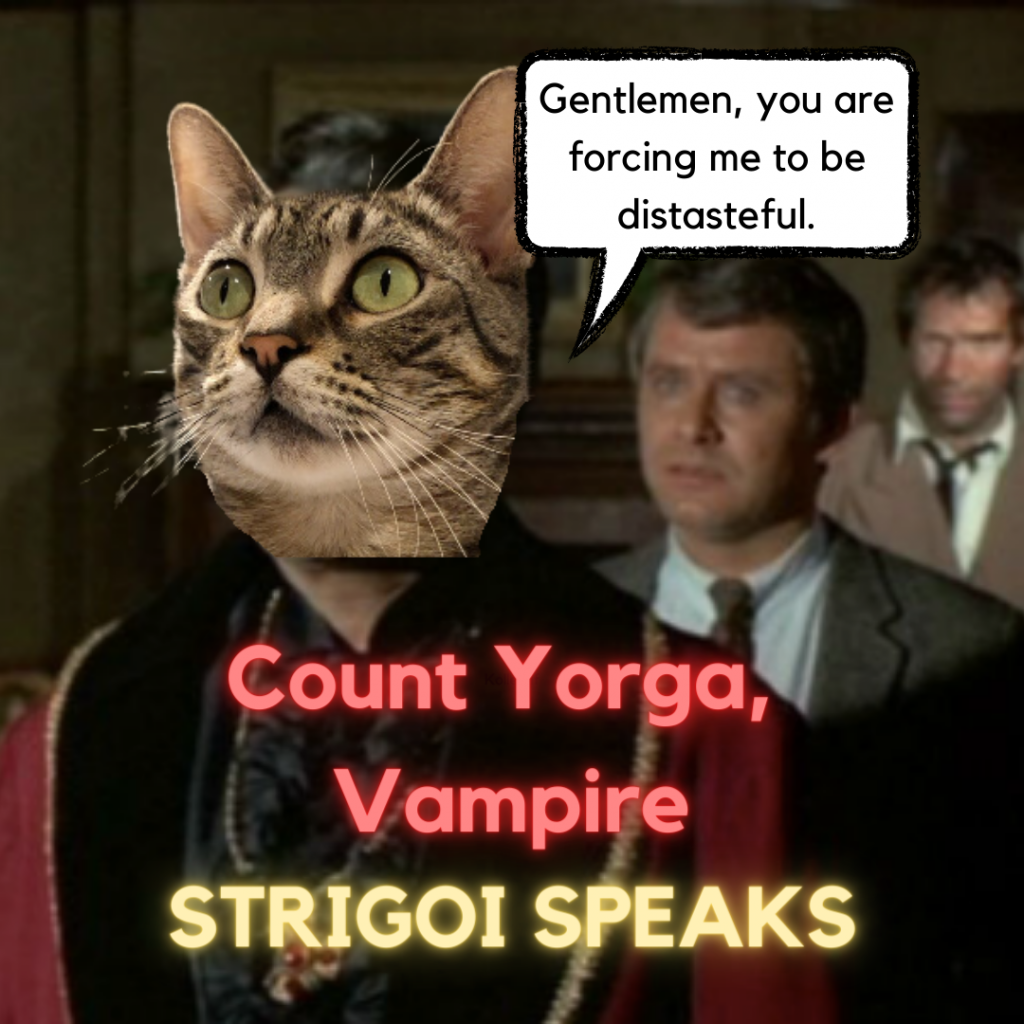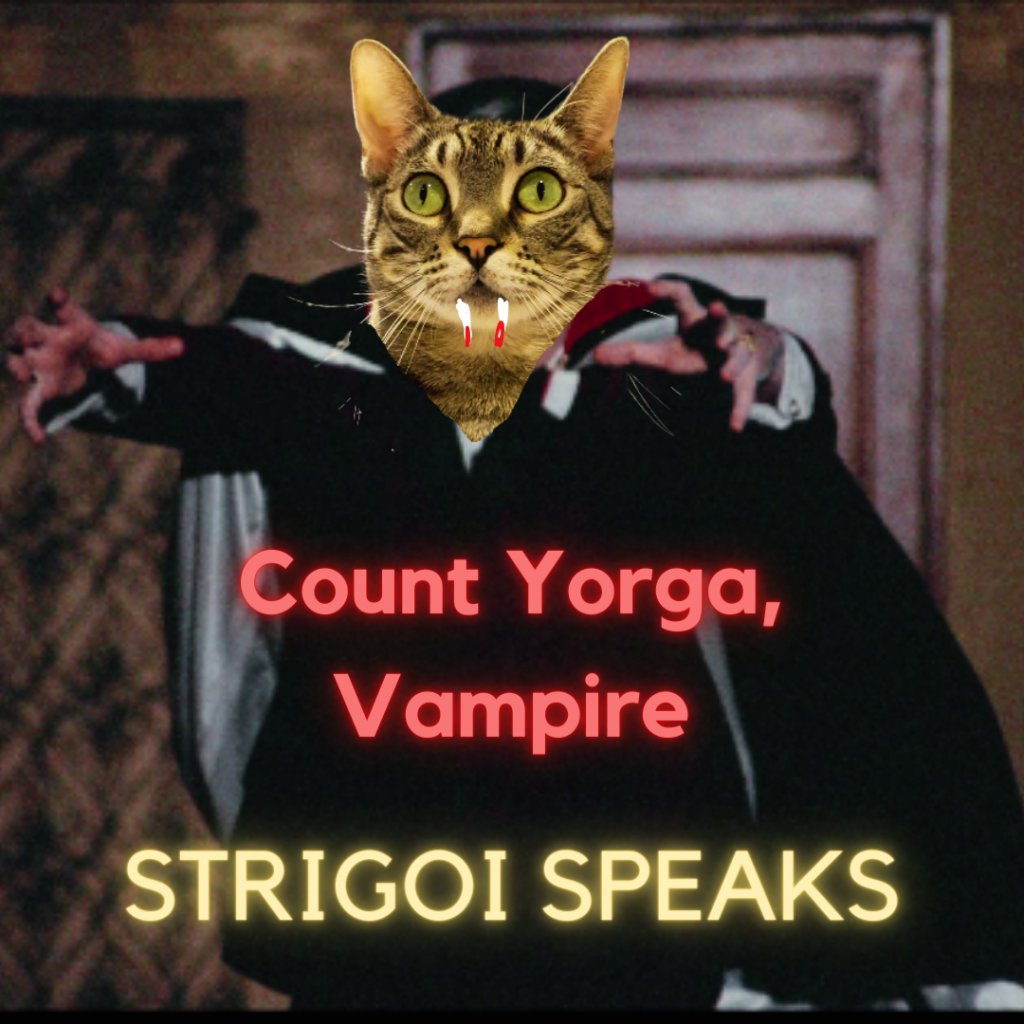

Vampires in fiction and film often have a rarified air. Their condescension makes sense: When you’re of aristocratic birth (which most of them are) and immortal, you have travel and educational opportunities that position you above the masses. But of all the superior vampires on the scene, Count Yorga has the most (and best) attitude. He’s so cool that butter wouldn’t melt in his mouth – literally or figuratively – and his subtle disdain for the living easily makes him the most shady vampire of all time. While that’s an achievement, Bob Kelljan’s Count Yorga, Vampire (1970) makes another significant contribution to the genre by ranking manners and not monsters as the movie’s primary source of anxiety and dread. Count Yorga heightens dramatic potential by exploring what happens when pressure is applied to the codes of courtesy that structure social intercourse. The film’s focus on the struggle to preserve civility adds a layer of psychological nuance to what might otherwise be standard vampire fare. If you’re a fan of the undead who hasn’t seen Count Yorga, you’re in for a treat!
Hoping to contact her dead mother, Donna holds a seance with her mother’s mysterious lover, Count Yorga, presiding as the medium. What she doesn’t know is that Yorga is a vampire émigré from Bulgaria whose arrival in Los Angeles neatly coincides with the onset of her mother’s fatal illness–pernicious anemia. When Donna is emotionally overwhelmed by her yearning for spirit communication, Yorga calms her through hypnosis and, in the process, delivers silent commands that turn her into his servant. Her hysterical outburst and the boorish reaction of Michael, her fiance, effectively end the night; and her friends, Erica and Paul, give Yorga a lift home. The couple get stuck in the mud on their return through Yorga’s sprawling estate and, after a softcore scene in their groovy VW van–they are attacked by the vampire, who knocks Paul unconscious and sinks his teeth into Erica, marking her as a vampire bride-to-be. And then Donna disappears.
After this, the plot follows the now familiar path set by Stoker’s Dracula: With their women at risk, the men circle the wagons and seek the assistance of an obnoxious doctor who also happens to specialize in vampirism. This being 1970 and not 1897–though it is hard to tell from the gender politics–Dr. Hayes faces more skepticism and outright ridicule than Van Helsing did; but in the end, his Victorian theory wins the day. While I know that Yorga, the cultured and witty vampire, must be defeated by these meatheads–it’s what the urtext demands–I wish it weren’t so. At least in this modern iteration, the “band of brothers” is completely destroyed in the process, and I take comfort in that.
The film generates tension through long scenes in which the characters struggle to maintain social norms in awkward situations. This strategy is pushed to its limit when Dr. Hayes, along with the reluctant Donna and Michael, arrive at the Count’s house in the middle of the night and insist on discussing the disappearance of their friends. The plan is to keep the Count talking until sunrise at which point he will either burst into flames or scurry to his casket. It’s a good idea as far as it goes, but it requires the threesome to be incredibly rude. Yorga makes it clear that their sudden appearance at such a late hour is highly irregular and that he would prefer to go to bed. Still, he tries to be polite by offering brandy and conversation, a courtesy that Hayes exploits through endless refills and questions. Is Yorga’s stiff formality the resistance of a normal man who has been disturbed by idiots or is it the response of a vampire who fears being outed? They can’t be sure, and unless they are willing to step more boldly outside the bounds of normal behavior, they can’t ask him. The threesome have their suspicions and Yorga knows what’s going on, but neither party can articulate their thoughts without completely destroying any remaining semblance of normality. And that’s a line no one will cross. Finally, Yorga says, “Gentleman, you are forcing me to be distasteful,” and insists that they reconvene at a more suitable time. This most delicate show of force is as violent as the scene gets, but it elevates the pitch of awkwardness to an almost unbearable level. I was so absorbed in the drama that my muscles ached from constant cringing.
Nor did I have time to relax. Kelljan’s talent for orchestrating and extending uncomfortable social situations is on full display later when Dr. Hayes arrives at Yorga’s home with the intent to kill him. Instead of witnessing a direct assault and experiencing the catharsis that goes with explicit aggression, we squirm in our seats as the two sit by the fireside and Yorga gently removes the sharpened chair leg from Hayes’ hands. It’s at once a dramatic show of power–-who has the phallus now?–and a benign gesture–the Count merely wants to examine a strange artifact. What makes this scene so great is its absurdity. The doctor allows the vampire to take his only weapon because he doesn’t want to be impolite!
Count Yorga is unusual in its use of decorum as an instrument of horror, but it also stands out for its treatment of sexuality. Dracula always has a collection of mindless brides who seem more of a hassle to him than a source of sexual enjoyment. Still, there’s always one woman–Mina or Lucy depending on the adaptation–whom Dracula genuinely desires and even loves. On the surface, Yorga may seem more libidinous than his predecessor. Watching from his basement throne, he controls his female converts like marionettes, mentally compelling them to enact a lesbian fantasy for his pleasure. But is there any? He seems profoundly bored. Neither Donna nor Erica are important to him. And while Yorga is arguably coded as gay, he has zero chemistry with the male characters, meeting their juvenile antics with undisguised frustration and contempt. Vampires are typically depicted as sexy creatures–both desired and desiring–but Yorga transcends anything so base as lust.
Indeed, if he longs for anything, it’s probably to be left alone. Endlessly put-upon, Yorga burns with a low blue flame of scorn for humanity, the heat of which shimmers dangerously beneath every smooth social encounter. This discrepancy between depth and surface, thought and expression, structures the story’s set pieces; and it’s this device that makes the film so successful. Each scene wavers with a suppressed passion that threatens to spring at any moment, shattering the calm of the drawing room with violence and–what’s worse–embarrassing directness. It’s exciting and uncomfortable. If you’re ready to shrink in mortification and lose yourself in generalized anxiety, then you’re emotionally prepared for Count Yorga, Vampire.